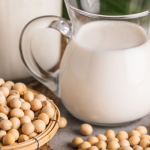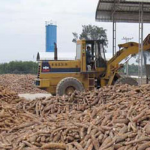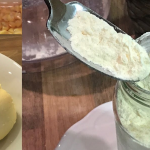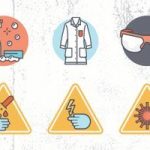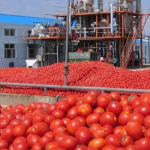Introduction
Yoghurt whose name come from the Turkish word ,Yoghurt is mostly made from natural milk i.e milk sourced from natural sources like a cow ,goat or a sheep ,after which milk is collected from a cow in a neat environment to avoid contamination of the milk, it is very important that the milk is free from anti microbials. After which it is heat treated and then left to ferment to a temperature of about 40-43 ˚C. Fermented milk which include yoghurt, butter milk, soar cream and kafir is also made from raw milk different from cheese in that rennet is not used and the thickening products is the result of the acidification by lactic acid bacteria .Microorganism are important in the production of yoghurt the starter culture is added to about 2% by volume to give an initial concentration of 10^6-10^7 cfu (colony forming unit) the fermentation may be conducted in the “retail pack” to produce a firm yoghurt with continuous coagulation” known as SET YOGHURT or “ in bulk tanks to produce stirred yoghurt where gel has been broken by mixing in other ingredients and pumping into packs. The fermentation takes about 4hrs during which the starter bacteria ferments lactose to lactic acid while decreasing its ph. from its initial level when the fermentation is complete, the yoghurt is cooled to 15-20˚C before the addition of fruits and flavor and packaging. It is further cooled below 5˚C under which condition it will be kept for about 3weeks.
NOTE: The Starter culture are in a lyophilized form (inactive form) it’s the starter milk that activates the microorganism present in the culture.
The Starter Culture contains 3 microorganisms, they are:
• Lactobacillus acidophilus
• Lactobacillus bulgaricus (45˚C)
• Streptococcus thermophilus ( 35˚C)
Nutritional Value of Yoghurt
Yogurt is nutritionally rich in protein, calcium, riboflavin, vitamin B6, and vitamin B12 .It has nutritional benefits beyond those of milk, namely due to its probiotics. Lactose-intolerant individuals may tolerate yogurt better than other dairy products due to the conversion of lactose to the sugars glucose and galactose, and the fermentation of lactose to lactic acid carried out by the bacteria present in the yogurt.
Milk yogurts contain no fat; others of low fat content have 2% fat, whole-milk yogurt may have 4% fat; some yogurts sold as “Greek-style” may have about 10% fat.
Objective of the Experiment
This experiment is carried out to produce yoghurt from milk
Procedure
1. Get the milk to be used
2. Carry out Heat Treatment
3. Homogenize, that is, break up the fat globules of the milk by mixing such that it becomes homogeneous
4. Cool to incubate temperature
5. Innoculate with starter culture
6. Dispense into Retail pot (Set yoghurt)
7. Incubate
8. Allow to cool
9. Add flavor (e.g. fruit flavour)
10. Pack at 4oC
Conclusion
Your yoghurt can be dispatched at 24oC
Download “Production of Yoghurt”
Production-of-Yoghurt.docx – Downloaded 0 times – 14.73 KB

